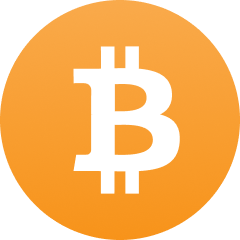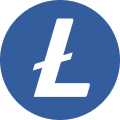Litecoin is one of old and a well-established cryptocurrency, known for being a "silver to Bitcoin's gold." Introduced in far 2011 by Charlie Lee, Litecoin was created to improve upon Bitcoin's technology, offering faster transaction times and much lower fees.
It ranks highly in terms of market capitalization and has maintained a stable position in the cryptocurrency market over the years. Litecoin employs a similar mining algorithm to Bitcoin, called Scrypt, which is less resource-intensive and allows for more accessible mining by individuals using consumer-grade hardware.
Litecoin is often used for microtransactions and as a testing ground for technological advancements that could later be applied to Bitcoin. It supports the creation and transfer of digital tokens without the need for an intermediary, much like other cryptocurrencies. The native token, LTC, is divisible into smaller units called "litoshi," with one litoshi being equivalent to 10−810−8 LTC.
There are no physical LTC tokens; Litecoin operates entirely as a digital currency. Its transactions are transparent, irreversible, and cannot be censored, offering a secure and decentralized method for financial exchanges. The Litecoin network is maintained by a decentralized network of nodes, which ensures its operational integrity and independence from centralized financial institutions.
Why Is the Litecoin Price So Volatile?
The price of Litecoin, like many other cryptocurrencies, is highly volatile due to several factors. Being in a relatively smaller market, large trades can significantly affect LTC's price. Moreover, Litecoin's value is heavily influenced by its perceived utility in faster and cheaper transactions, especially in comparison to Bitcoin. Fluctuations in adoption, technological upgrades, and shifts in regulatory environments can swiftly impact its supply and demand dynamics, contributing to price instability. Media coverage and public sentiment also play critical roles in influencing Litecoin's market value, with positive news tending to drive up prices and negative news causing declines. Additionally, speculative trading based on market trends and investor sentiment can lead to rapid price movements.
Litecoin is often used for microtransactions and as a testing ground for technological advancements that could later be applied to Bitcoin. It supports the creation and transfer of digital tokens without the need for an intermediary, much like other cryptocurrencies. The native token, LTC, is divisible into smaller units called "litoshi," with one litoshi being equivalent to 10−810−8 LTC.
There are no physical LTC tokens; Litecoin operates entirely as a digital currency. Its transactions are transparent, irreversible, and cannot be censored, offering a secure and decentralized method for financial exchanges. The Litecoin network is maintained by a decentralized network of nodes, which ensures its operational integrity and independence from centralized financial institutions.
Why Is the Litecoin Price So Volatile?
The price of Litecoin, like many other cryptocurrencies, is highly volatile due to several factors. Being in a relatively smaller market, large trades can significantly affect LTC's price. Moreover, Litecoin's value is heavily influenced by its perceived utility in faster and cheaper transactions, especially in comparison to Bitcoin. Fluctuations in adoption, technological upgrades, and shifts in regulatory environments can swiftly impact its supply and demand dynamics, contributing to price instability. Media coverage and public sentiment also play critical roles in influencing Litecoin's market value, with positive news tending to drive up prices and negative news causing declines. Additionally, speculative trading based on market trends and investor sentiment can lead to rapid price movements.






















